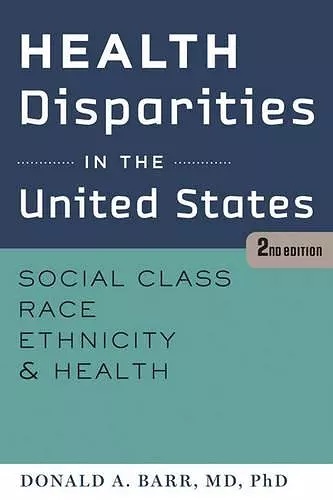Questioning the Premedical Paradigm
Enhancing Diversity in the Medical Profession a Century after the Flexner Report
Format:Hardback
Publisher:Johns Hopkins University Press
Published:16th Apr '10
Currently unavailable, and unfortunately no date known when it will be back

Abraham Flexner's 1910 report on the state of early twentieth century medical education elicited a host of transformational changes in U.S. medical schools, most of which remain as salient today as they were 100 years ago. But not all! As this provocative and timely volume documents, the science and math prerequisites for medical school admission triggered by Flexner's report have long since outlived their salience. What's worse, they are serving to dissuade countless students with precisely the backgrounds, temperament and commitment we seek in our physicians from pursuing their dream. Barr supports his thesis with compelling data and provides a blueprint for how the premedical knowledge that is truly required for the study of medicine today can be integrated and imparted more efficiently and less punitively. Medical educators, pre-medical advisors and all those responsible for crafting undergraduate curricula for aspiring doctors are urged to read this book and heed its post-Flexnerian message. -- Jordan J. Cohen, M.D., George Washington University and President Emeritus, Association of American Medical Colleges
This historical and cultural analysis of premedical education in the United States is the crucial first step in questioning the appropriateness of continuing a hundred-year-old, empirically dubious pedagogical model for the twenty-first century.This book raises fundamental questions about the propriety of continuing to use a premedical curriculum developed more than a century ago to select students for training as future physicians for the twenty-first century. In it, Dr. Donald A. Barr examines the historical origins, evolution, and current state of premedical education in the United States. One hundred years ago, Abraham Flexner's report on Medical Education in the United States and Canada helped establish the modern paradigm of premedical and medical education. Barr's research finds the system of premedical education that evolved to be a poor predictor of subsequent clinical competency and professional excellence, while simultaneously discouraging many students from underrepresented minority groups or economically disadvantaged backgrounds from pursuing a career as a physician. Analyzing more than fifty years of research, Barr shows that many of the best prospects are not being admitted to medical schools, with long-term adverse consequences for the U.S. medical profession. The root of the problem, Barr argues, is the premedical curriculum-which overemphasizes biology, chemistry, and physics by teaching them as separate, discrete subjects. In proposing a fundamental restructuring of premedical education, Barr makes the case for parallel tracks of undergraduate science education: one that would largely retain the current system; and a second that would integrate the life sciences in a problem-based, collaborative learning pedagogy. Barr argues that the new, integrated curriculum will encourage greater educational and social diversity among premedical candidates without weakening the quality of the education. He includes an evaluative research framework to judge the outcome of such a restructured system. This historical and cultural analysis of premedical education in the United States is the crucial first step in questioning the appropriateness of continuing a hundred-year-old, empirically dubious pedagogical model for the twenty-first century.
"As this provocative and timely volume documents, the science and math prerequisites for medical school admission triggered by Flexner's report have long since outlived their salience. What's worse, they are serving to dissuade countless students with precisely the backgrounds, temperament, and commitment we seek in our physicians from pursuing their dream." - Jordan J. Cohen, M.D., George Washington University and President Emeritus, Association of American Medical Colleges"
ISBN: 9780801894169
Dimensions: 229mm x 152mm x 22mm
Weight: 476g
240 pages